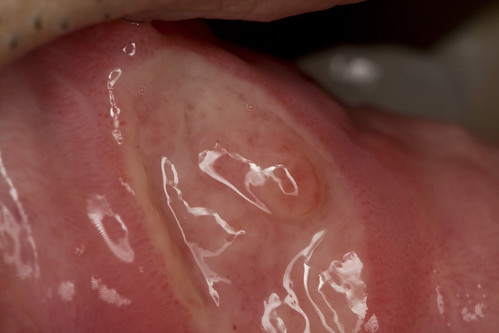 Some of the dental conditions that affect the mouth aren’t necessarily directly related to the teeth or gums. In fact, many of the most common types of dental conditions occur on the insides of the lips or cheeks. While some of these conditions might be more serious than others, some are relatively common, although they might be a bit uncomfortable while they last. One of these types of mouth infections is known as cold sores.
Some of the dental conditions that affect the mouth aren’t necessarily directly related to the teeth or gums. In fact, many of the most common types of dental conditions occur on the insides of the lips or cheeks. While some of these conditions might be more serious than others, some are relatively common, although they might be a bit uncomfortable while they last. One of these types of mouth infections is known as cold sores.
What Are Cold Sores?
Cold sores, also known as fever blisters, are small clusters of blisters that appear on the lips or around the mouth area. They can be located on either the inside or exterior part of the lips and mouth, and they can be extremely uncomfortable, depending upon their location. Most cold sores are more painful with the teeth or tongue brush against them or when they are exposed to extremely hot or cold temperatures as well as spicy, acidic or salty foods. Cold sores are relatively easy to recognize since they are not only associated with a certain amount of pain, but they also have a red, swollen appearance and may also be filled with a clear fluid. Some of the first symptoms of cold sores might include pain around the infected area, a sore throat and even swollen glands in the neck.
What Causes Cold Sores
Cold sores are a type of viral infection that is caused by the herpes simplex virus, also technically known as HSV-1. There are two types of herpes simplex virus. This one is the one that affects the mouth area while the HSV-2 virus is the one that affects the genitals. Usually, the virus enters the body through a break in the skin around the mouth or lips. Among the most common ways that cold sores are spread is by kissing an infected person, touching a cold sore or touching an object that has some fluid from a cold sore on it. Examples of ways that people can get cold sores through touching objects are when eating off a utensil an infected person has eaten off of, using the same razor as an infected person and by touching an infected person’s saliva.
Treatment for Cold Sores
 Unfortunately, there is no one cure for cold sores. In fact, once a person gets cold sores, the HSV-1 virus hides within his or her nerve cells between outbreaks, which means that it’s never completely cured. The cycle of a cold sore usually begins with a sore feeling followed by the visibility of a blister. Shortly after the blister appears, it will break and leak fluid before the area scabs over and eventually disappears. The good news is that cold sores usually only last between one and two weeks, and there are plenty of over-the-counter medications and preventative measures that people who suffer from them can take to help them manage their discomfort and reduce the likelihood of them coming back frequently.
Unfortunately, there is no one cure for cold sores. In fact, once a person gets cold sores, the HSV-1 virus hides within his or her nerve cells between outbreaks, which means that it’s never completely cured. The cycle of a cold sore usually begins with a sore feeling followed by the visibility of a blister. Shortly after the blister appears, it will break and leak fluid before the area scabs over and eventually disappears. The good news is that cold sores usually only last between one and two weeks, and there are plenty of over-the-counter medications and preventative measures that people who suffer from them can take to help them manage their discomfort and reduce the likelihood of them coming back frequently.
Without treatment, most cold sores will clear up within two weeks at the most. However, people who tend to have cold sores often might suffer from a case of cold sores for up to a month without treatment. Some of the most common treatments for cold sores that can help speed up the healing process include antiviral medications such as the following:
• Acyclovir (Xerese, Zovirax)
• Valacyclovir (Valtrex)
• Famciclovir (Famvir)
• Penciclovir (Denavir)
Some of these types of antiviral medications come in a pill form to be taken as prescribed, whereas some of them come in a topical cream form to be applied to the affected area as prescribed. For extremely severe cases of cold sores, an antiviral medication can even be given with an injection. In the meantime, there are many measures individuals can take to reduce the pain associated with the condition. Some of these measures include applying a cool compress to the infected area, frequently applying lip balms and creams, using over-the-counter pain relieving creams, healing creams and so on.
References:
American Academy of Dermatology. “Herpes simplex.” Retrieved on February 18, 2016, from https://www.aad.org/dermatology-a-to-z/diseases-and-treatments/e—h/herpes-simplex.
MedicineNet. “Cold Sores.” Retrieved on February 18, 2016, from http://www.medicinenet.com/cold_sores_pictures_slideshow/article.htm.
American Academy of Dermatology
930 E. Woodfield Rd.
Schaumberg, IL 60173
866-503-7546
www.aad.org
MedicineNet
111 8th Ave.
7th Floor
New York, NY 10011
212-624-3700
https://www.medicinenet.com
Images:
https://farm7.staticflickr.com/6194/6065724135_effeb1f2c0.jpg
https://farm6.staticflickr.com/5706/20844598984_748caf95d6_m.jpg